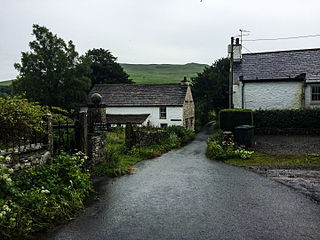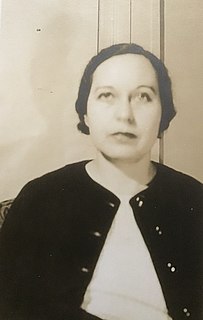Related Research Articles

Edward Estlin Cummings, often written in all lowercase as e e cummings, was an American poet, painter, essayist, author, and playwright. He wrote approximately 2,900 poems, two autobiographical novels, four plays, and several essays. He is often regarded as one of the most important American poets of the 20th century. Cummings is associated with modernist free-form poetry. Much of his work has idiosyncratic syntax and uses lower-case spellings for poetic expression.

Sir Thomas Wyatt was a 16th-century English politician, ambassador, and lyric poet credited with introducing the sonnet to English literature. He was born at Allington Castle near Maidstone in Kent, though the family was originally from Yorkshire. His family adopted the Lancastrian side in the Wars of Roses. His mother was Anne Skinner, and his father Henry, who had earlier been imprisoned and tortured by Richard III, had been a Privy Councillor of Henry VII and remained a trusted adviser when Henry VIII ascended the throne in 1509. Thomas followed his father to court after his education at St John's College, Cambridge. Entering the King's service, he was entrusted with many important diplomatic missions. In public life his principal patron was Thomas Cromwell, after whose death he was recalled from abroad and imprisoned (1541). Though subsequently acquitted and released, shortly thereafter he died. His poems were circulated at court and may have been published anonymously in the anthology The Court of Venus during his lifetime, but were not published under his name until after his death; the first major book to feature and attribute his verse was Tottel's Miscellany (1557), printed 15 years after his death.

Lascelles Abercrombie, was a British poet and literary critic, one of the "Dymock poets". After the First World War he worked as a professor of English literature in a number of English universities, writing principally on the theory of literature.

Marianne Craig Moore was an American modernist poet, critic, translator, and editor. Her poetry is noted for formal innovation, precise diction, irony, and wit.
Modernist poetry in English started in the early years of the 20th century with the appearance of the Imagists. In common with many other modernists, these poets wrote in reaction to the perceived excesses of Victorian poetry, with its emphasis on traditional formalism and ornate diction. In many respects, their criticism echoes what William Wordsworth wrote in Preface to Lyrical Ballads to instigate the Romantic movement in British poetry over a century earlier, criticising the gauche and pompous school which then pervaded, and seeking to bring poetry to the layman.

Sara Teasdale was an American lyric poet. She was born Sarah Trevor Teasdale in St. Louis, Missouri, and used the name Sara Teasdale Filsinger after her marriage in 1914.

Louis Zukofsky was an American poet. He was the primary instigator and theorist of the so-called "Objectivist" poets, a short lived collective of poets who after several decades of obscurity would reemerge around 1960 and become a significant influence on subsequent generations of poets in America and abroad.
The Objectivist poets were a loose-knit group of second-generation Modernists who emerged in the 1930s. They were mainly American and were influenced by, among others, Ezra Pound and William Carlos Williams. The basic tenets of objectivist poetics as defined by Louis Zukofsky were to treat the poem as an object, and to emphasize sincerity, intelligence, and the poet's ability to look clearly at the world. While the name of the group is similar to Ayn Rand's school of philosophy, the two movements are not affiliated.

Basil Cheesman Bunting was a British modernist poet whose reputation was established with the publication of Briggflatts in 1966, generally regarded as one of the major achievements of the modernist tradition in English. He had a lifelong interest in music that led him to emphasise the sonic qualities of poetry, particularly the importance of reading poetry aloud. He was an accomplished reader of his own work.

George Oppen was an American poet, best known as one of the members of the Objectivist group of poets. He abandoned poetry in the 1930s for political activism and moved to Mexico in 1950 to avoid the attentions of the House Un-American Activities Committee. He returned to poetry—and to the United States—in 1958, and received the Pulitzer Prize for Poetry in 1969.
Lorine Faith Niedecker was an American poet. Niedecker's poetry is known for its spareness, its focus on the natural landscapes of Wisconsin and the Upper Midwest, its philosophical materialism, its mise-en-page experimentation, and its surrealism. She is regarded as a major figure in the history of American regional poetry, the Objectivist poetic movement, and the mid-20th-century American poetic avant-garde.
Richard Caddel was a poet, publisher and editor who was a key figure in the British Poetry Revival.
Tom Pickard is a poet, and documentary film maker who was an important initiator of the movement known as the British Poetry Revival.

Briggflatts is a long poem by Basil Bunting published in 1966. The work is subtitled "An Autobiography." The title "Briggflatts" comes from the name of Brigflatts Meeting House in a Quaker Friends meeting house near Sedbergh in Cumbria, England. Bunting visited Brigflatts as a schoolboy when the family of one of his schoolfriends lived there, and it was at this time that he developed a strong attachment to his friend's sister, Peggy Greenbank, to whom the poem is dedicated. It was first read in public on 22 December 1965 in the medieval Morden Tower, part of Newcastle town wall, and published in 1966 by Fulcrum Press. Bunting also wrote another poem with "Briggflatts" in its title, the short work "At Briggflatts meetinghouse" (1975).
The National Poetry Foundation (NPF) is a book publisher founded in 1971 by Carroll F. Terrell who built its reputation with Burton Hatlen at the University of Maine in Orono. Today it publishes poetry by individual authors as well as both journals and scholarship devoted to Ezra Pound and poets in the Imagist and "Objectivist" traditions. It has also positioned itself as a center and host for international conferences on modern poetry.
Nationality words link to articles with information on the nation's poetry or literature.
Nationality words link to articles with information on the nation's poetry or literature.
Nationality words link to articles with information on the nation's poetry or literature.
René Taupin was a French translator, critic, and academic who lived most of his life in the United States and is best known for heading the Romance Languages department at Hunter College.

Kathleen Tankersley Young (1903–1933) was an American writer, poet, and editor active in publishing during the late 1920s and early 1930s. Although her work has received relatively little attention from scholars and publishers since her death, she published her poetry widely in the poetry magazines of her day and corresponded with a wide circle of literary friends, acquaintances, and collaborators. The literary scholar Eric White has written of Young: "Almost forgotten by literary history, Kathleen Tankersley Young's name appears like a cipher through little magazines of the late 1920s and early 1930s, and in anthologies of Harlem Renaissance and American women's poetry."
References
- ↑ Pursglove, Glyn, Redimiculum Matellarum, The Literary Encyclopedia . First published 21 March 2002, accessed 15 July 2014.
- 1 2 3 Richard Burton (2013). A Strong Song Tows Us: The life of Basil Bunting, Britain's greatest modernist poet. Infinite Ideas. pp. 168–9. ISBN 978-1-909652-48-4.
- ↑ Topness, Terri L. (2005). "Bunting, Basil". In Alan Parker, Mark Willhardt (ed.). Who's Who in Twentieth Century World Poetry. Routledge. p. 119. ISBN 978-1-134-71375-2.
- ↑ Louis Zukofsky, Poetry, June 1931